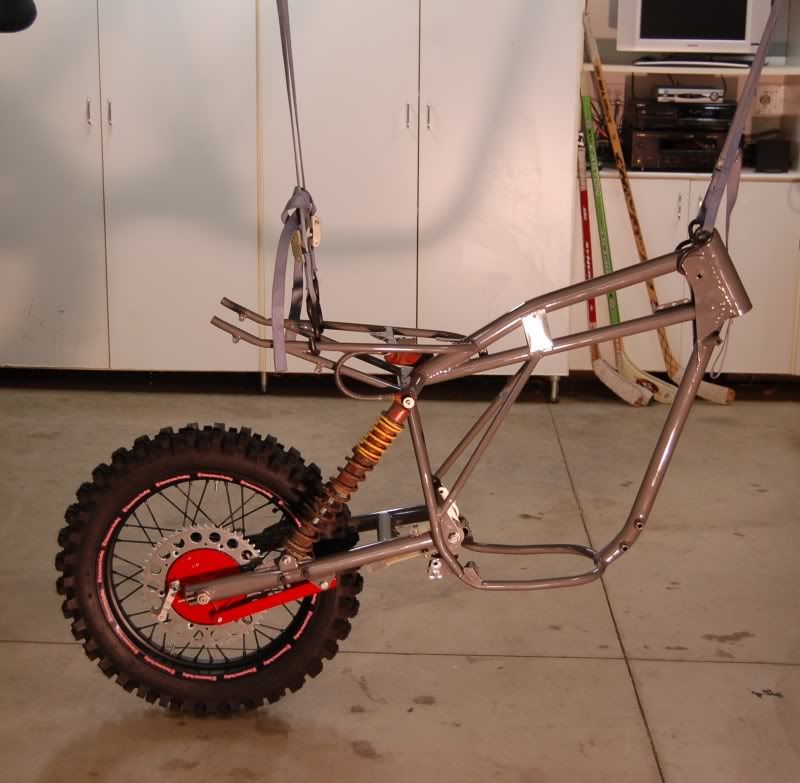I have now replaced my rusted 1979 OR frame with a much better condition 1980 OR frame, and there is a difference between the type of rear brake used. The brake on the 79 frame I have is a floating brake, so the torque arm goes from the brake plate to a bracket on the frame near the footrest which also doubles up as the rear brake pedal mounting bracket.
The 1980 bike uses a different brake plate, and the torque arm is shorter and bolts to a lug on the swinging arm, so a non-floating rear brake.
My question is whether the brake plate designed for the floating system can be used with a non-floating swinging arm. I could quite easily fabricate a suitable torque arm, but the design of the brake plates is different, so I am concered that the floating brake plate should not be used with the non-floating swingarm.
Any thoughts and comments from any of the experts?
The 1980 bike uses a different brake plate, and the torque arm is shorter and bolts to a lug on the swinging arm, so a non-floating rear brake.
My question is whether the brake plate designed for the floating system can be used with a non-floating swinging arm. I could quite easily fabricate a suitable torque arm, but the design of the brake plates is different, so I am concered that the floating brake plate should not be used with the non-floating swingarm.

Any thoughts and comments from any of the experts?

